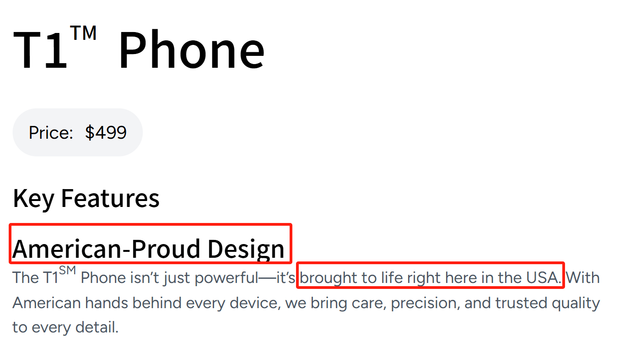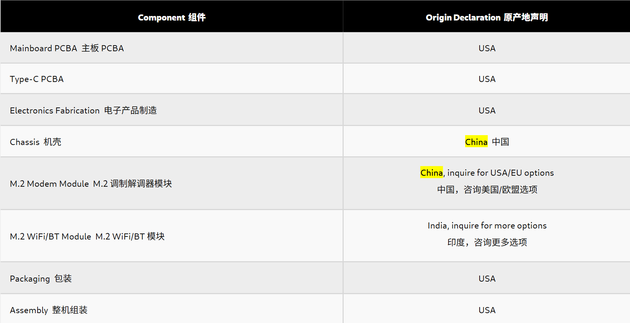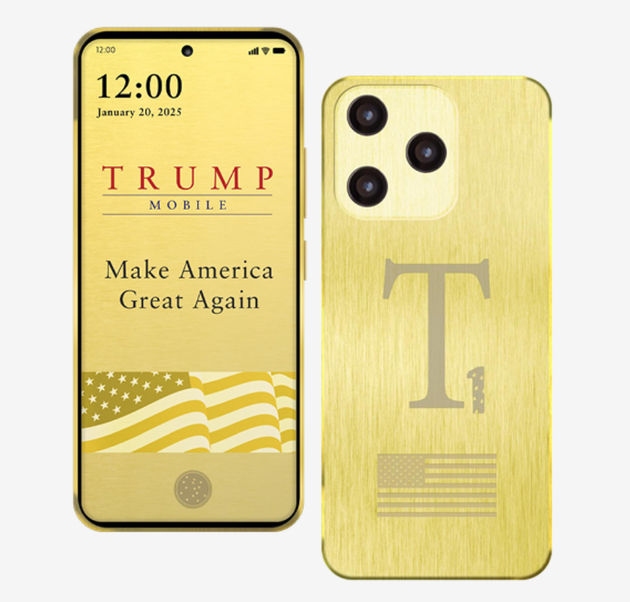
Photo/Trump Mobile website
In mid-June, Trump Mobile, the wireless service provider and phone company launched by the Trump Organization, proudly announced its entry into the mobile market with the T1 smartphone, priced at $499 and touted as "Made in USA." However, this patriotic marketing was quickly exposed by industry experts.
Todd Weaver, CEO of Purism—the only company that has spent over a decade trying to assemble smartphones in the US—flatly debunked the "Made in USA" claim, stating the T1 is produced by a Chinese company. Industry professionals echoed these doubts, citing the fundamental lack of a supporting supply chain in the US.
The T1's official website has since quietly changed its "Made in USA" description to "Born in the USA." In an interview with National Business Daily (NBD), Weaver emphasized that "key components like cameras, screens, batteries, and the chassis still cannot be manufactured in the United States."

Photo/Purism website
Purism's own "Liberty Phone", while considered the closest to a "Made in USA" smartphone, highlights this reality. Despite being assembled in the US with US-made PCBs, its motherboard and modem modules originate from China. The Liberty Phone's specifications are comparable to an entry-level device, yet it carries a hefty $1,999 price tag, a stark contrast to its market value and $1,200 more than a 128GB iPhone 16.
Industry experts confirm that a truly "Made in USA" phone would likely cost over $1,000, as "without Asian manufacturing capabilities and related economies of scale, it's financially impossible to balance," as per supply chain expert Tinglong Dai.

Photo/Trump Mobile website
Analysts point out that since the 2G era, few phones have been manufactured in the US due to a weaker supply chain, fewer qualified workers, and lower profit margins.
Zhu Jiatao, Chief Analyst at Canalys, said to NBD that many smaller brands and operators opt for ODM (Original Design Manufacturing) from Chinese manufacturers. He added that China has made significant progress in domestic production of core phone components like displays, cameras, and batteries.
Data shows that China supplies about 60% of global smartphones and projected to account for nearly 70% of global battery capacity by 2030.
Beyond the supply chain, the US also faces a shortage of skilled workers and engineers. Weaver highlighted that while China has "thousands of electronics engineers in buildings," the US might only find a handful. This underscores China's strong advantages in worker quality, production efficiency, and industrial chain support, meaning many phones produced overseas still rely on China's supply chain for components.
The Trump Mobile's "Made in USA" claim for the T1 appears to be a marketing tactic that glosses over the complex global realities of smartphone manufacturing.


 川公网安备 51019002001991号
川公网安备 51019002001991号





